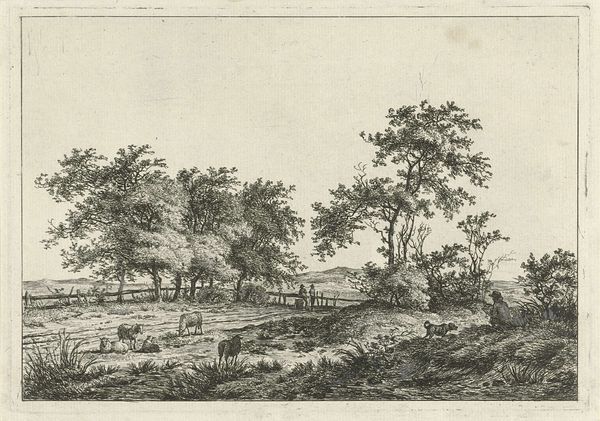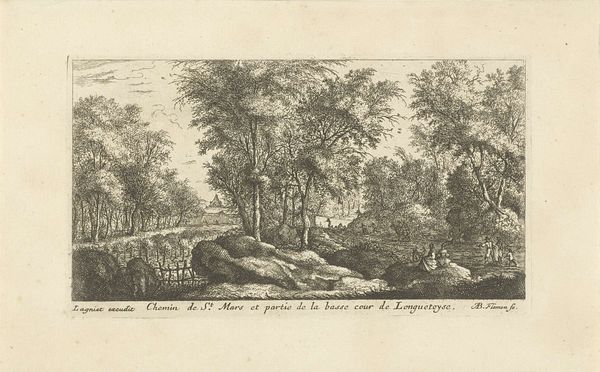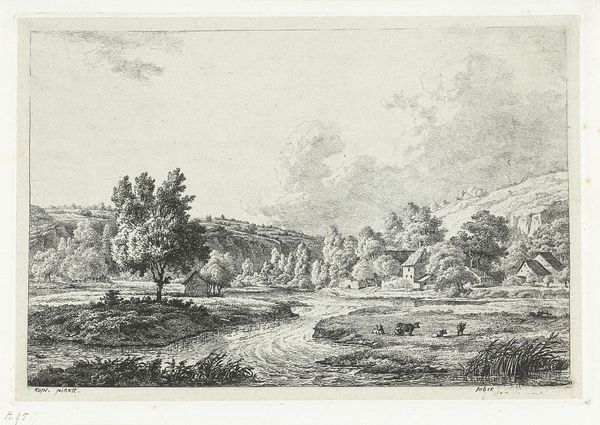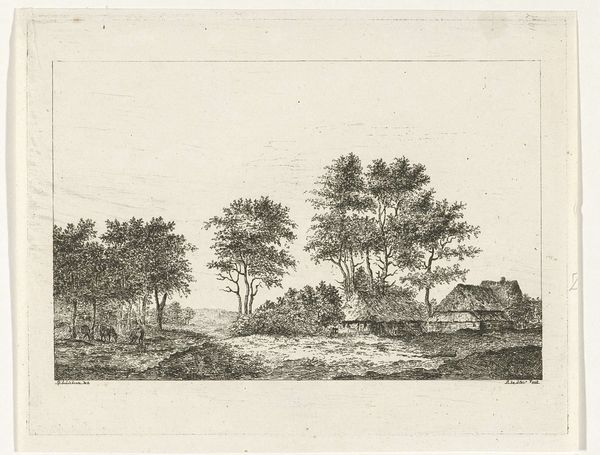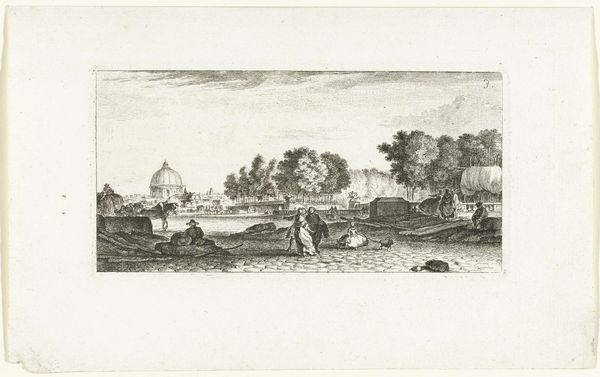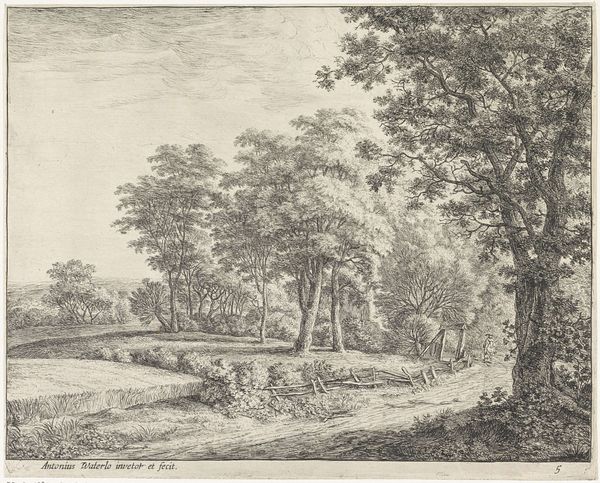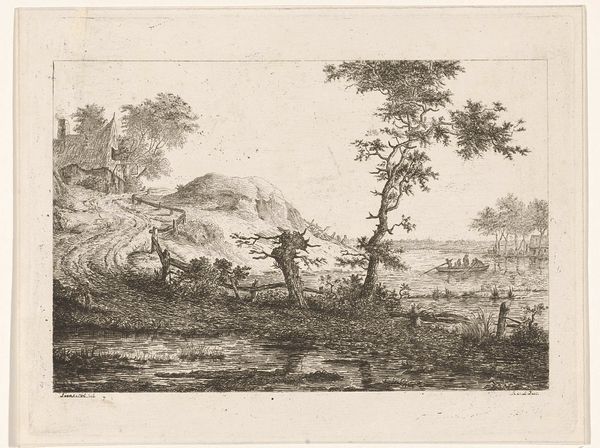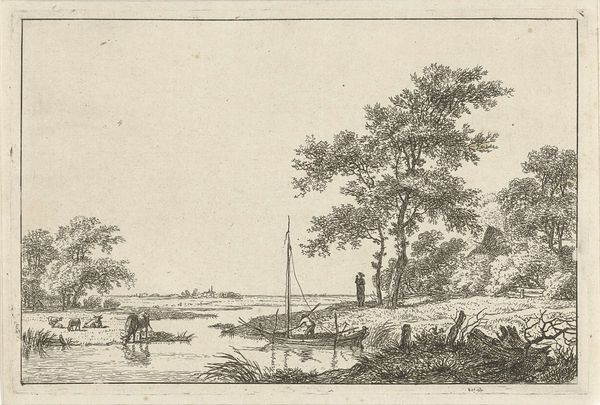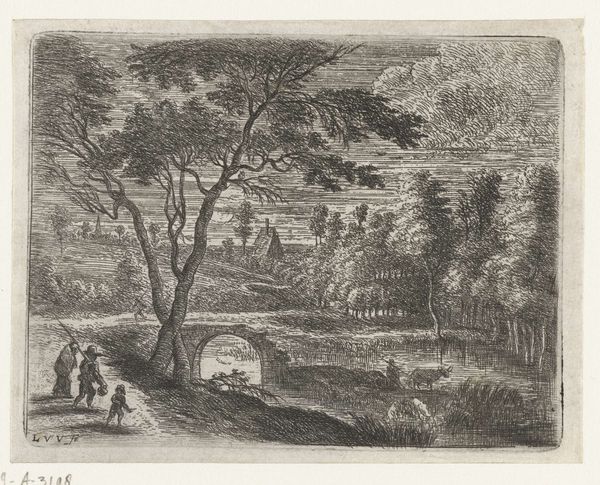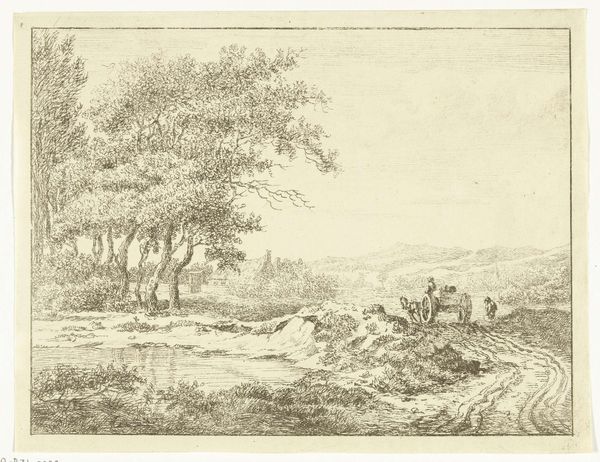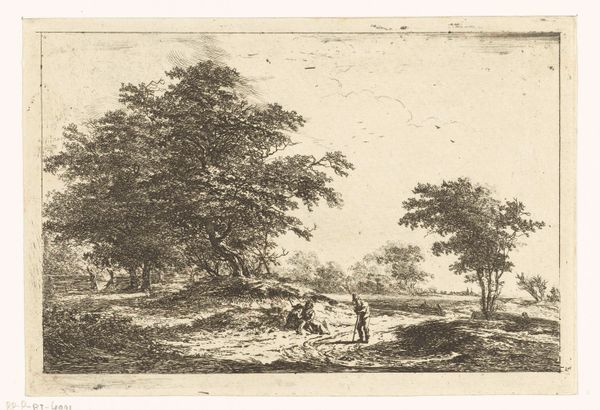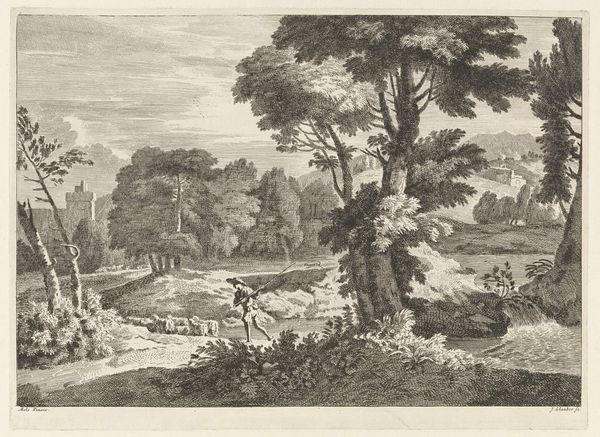
Landschap met de overkapping van een hooiberg 1796 - 1856
0:00
0:00
drawing, etching
#
drawing
#
etching
#
landscape
#
etching
#
romanticism
Dimensions: height 170 mm, width 225 mm
Copyright: Rijks Museum: Open Domain
This landscape with a hayrick’s shelter was made by Reinierus Albertus Ludovicus baron van Isendoorn à Blois using etching. The artist used traditional methods and materials, manipulating a metal plate to capture the scene. Looking closely, you can see the meticulous marks that form the image, from the delicate lines defining the trees to the coarser textures of the hayrick. Etching involves covering a metal plate with a waxy, acid-resistant layer. The artist then draws through this layer, exposing the metal. When the plate is immersed in acid, the exposed lines are eaten away, creating grooves. The plate is then inked, and the surface wiped clean, leaving ink only in the etched lines. Finally, it is pressed onto paper, transferring the image. This process, though technical, allowed for multiple reproductions, democratizing art in a way. Each print carries the mark of the artist's hand and is also a product of labor, acid, ink, and the printing press, reflecting the changing dynamics of production and consumption in the 19th century. Recognizing the interplay between materials, process, and social context is crucial to understanding this artwork beyond its surface appearance.
Comments
No comments
Be the first to comment and join the conversation on the ultimate creative platform.
